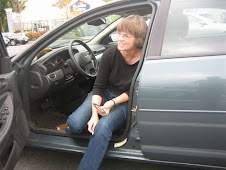I almost didn’t bother reading The Paris Wife by Paula McLain after I read the New York Times book review last Sunday. The comment that discouraged me to return it immediately to the library was that the depiction of Hadley Richardson, Hemingway’s first wife, was one-dimensional. But the characters were immediately familiar, like looking through old Life magazines, and the setting of Paris in the Roaring 20s ever as alluring that I raced through chapters at break-neck speed, rushing towards the train wreck of their marriage.
Instead of feeling flat, McLain’s biographical novel reminded me of a summer concert several years ago when we went to see Dolly Parton. The glitter and the fame showed up, but Dolly was inaccessible to the audience. It was as if she performed behind bullet proof glass. No emotion, no interest emanated from her act. I’m just recalling a similar experience at a Bette Midler show. Given their fame and constant media exposure, neither “star” felt compelled to be real. On the other hand, it reminded me of the shallowness of Loving Frank, an author trying to capitalize of the scandals of the famous.
McLain itemizes all the American literary giants drawn to France, like an unending game of six degrees of separation. Hardly anyone shows up expectedly, but right on cue. Hemingway’s talents remain mysterious behind his closed doors in separate quarters, too small to be garconieres, but nonetheless giving him cover for his adulterous seductions. Hadley is depicted as a woman out of synch with time, still a dutiful mid-Western, Victorian wife frightened to bob her hair or wear form fitting clothes. While Ernest marries for just these comfortable, non-confrontational characteristics, she gets depressed comparing herself to the Flappers that he finds so attractive.
Lining up TPW against The Alexandrian Quartet or even The Museum of Innocence, the Slackers might consider is it time and familiarity alone that tarnishes passion or is it the congruence of freer friends in a tumultuous setting that contributes more to marital boredom, affairs and divorce. Core themes I cull from these three novels are the human need to look backwards and ask themselves “what did we have,” “why didn’t we recognize it,” and more importantly “why didn’t I ever know what I wanted.”
The novelist uses the retrospective, all knowing how things will turn out perspective of the narrator to make the protagonist older, wiser and more at peace at the end of the story. But the drama is in the personal journey and not the emotionally mature destination. The 2011 search for lust and passion is a quest for that most thrilling of rides. It can be an experience lasting as long as racing a Texan quarter horse or an Irish hurdler; but like a kid at the fair, you always want to ask for one more ride.
Wednesday, March 23, 2011
The Marriage and Mistress Needs of Famous Men
Subscribe to:
Post Comments (Atom)



No comments:
Post a Comment